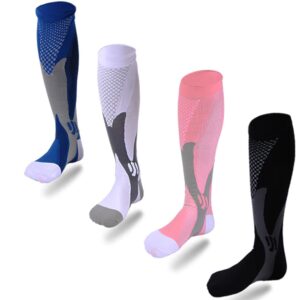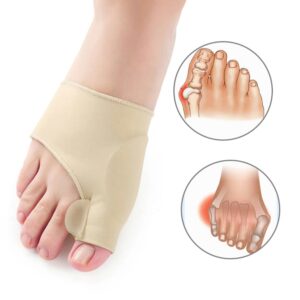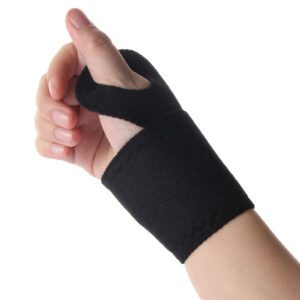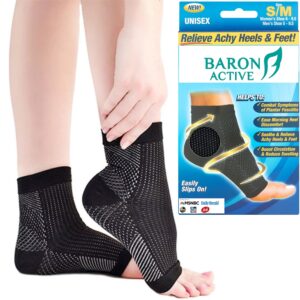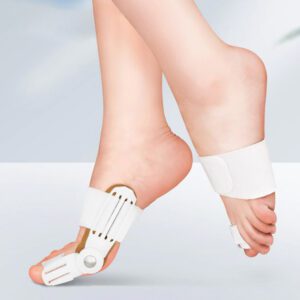Running is one of the most popular ways of exercising. It’s a low-barrier activity for beginners and if you want to improve your overall health and it’s rewarding and addictive for everyone looking for a more ambitious type of sport.
Around 20% of all Americans participate in running, jogging or trail running activities every year. But why is running so popular?
The most important benefit of running is that it improves your fitness and health fast. You feel the impact of a good run literally from the first mile on and you can almost feel your body getting rid of toxins. Jogging improves your cardiovascular system and burns fat effectively, but it also helps to reduce stress, strengthen muscles and even boosts your immune system. It’s a great way to stay in shape physically and mentally.
Running is rewarding because everyone can connect with running on an emotional level even though they’re not all athletes or marathon runners. Especially trail running, which is a beloved activity of many nature lovers.
What’s not so rewarding about running though is that a lot of people develop knee injuries over time. This article will show you how to keep your knees healthy as a runner and prevent injuries from happening in the first place.
Is running every day bad for the knees?
A lot of runners ask themselves this question and they don’t know if it’s better to run every single day or just a few times per week. The truth is that there is no definite answer to this question though.
It all depends on the runner’s fitness level, age and other factors influencing their knees. In general, running once a day is not bad for your knees. If you increase the frequency and change to more intense workouts, this can lead to overuse injuries though.
In fact, multiple studies show that running is actually good for your knees. Regular running protects against the development of arthritis later in your life and strengthens the joints instead.
Don’t be concerned if you are a runner worried that your hobby will lead to knee pain.
Experts, though, emphasize that all athletes, including runners, should pay attention to any pain they feel and have it evaluated as soon as possible. Early treatment of pain may help avoid additional injury and a more difficult recovery in the future.
How can I run and not damage my knees?
Knees are the most frequently damaged body part among runners, yet contrary to popular belief, running itself does not cause harm to this particularly sensitive joint. With regular activity, numerous studies have shown that running does not harm the knee.
Why is runner’s knee such a prevalent problem? The majority of knee problems are caused by things going wrong in other areas of the body, particularly the upper and lower legs and feet.
When you run without injuring your knees, it’s all about ensuring that your legs are adequately supported while also ensuring that the rest of your body is in good working order. Here are some advice for running without hurting your knees:
- Wear a knee brace. If you’ve had knee problems in the past, wearing a running knee brace may help to decrease discomfort and make your run more pleasant. Knee supports send information to the brain, which helps to keep the muscles that support your knee active.
- Stretch your knees. Knee supports will help to decrease pain and provide greater comfort, but they won’t address the actual cause of your knee discomfort. It’s critical to improve the muscles around your knees in order to enhance long-term knee health.
- Wear the right shoes. Running shoes are also critical, as ill-fitting footwear can cause a slew of knee problems. When you run, the majority of the impact is absorbed by your feet, so if your running shoes don’t provide adequate support, the force will be dispersed throughout your legs and into your knees.
- Choose your route. Finally, the places you select to run may also have a big influence. Running on uneven ground can put extra torque on your knees, so Choose flat surfaces such as sidewalks when possible.
Should I wear a knee support brace when running?
Nearly half of all running injuries are associated with the knees. But does that mean wearing a knee brace is good for anyone who runs? Not necessarily. If you don’t have any pain in your knees and if your knees feel strong, don’t produce any sounds while running and give you the athletic performance you’re expecting then no, you don’t need to wear a knee brace.
You have already learned that wearing a knee support brace is a good way to support and stabilize your knee during your runs. And this does not only apply to weak or injured knees. Prevention is one of the best ways to avoid injuries and a knee brace does certainly help. But how does a knee brace work and what are the benefits of wearing one while running?
What is a knee brace and how does it help my running?
A brace, often constructed from stretchy elasticated material such as neoprene, plastic, or foam, is worn over the knee during exercise to assist support and reduce discomfort from injury or a chronic knee problem.
Basic knee braces are used by many athletes, footballers, weightlifters, and runners to assist prevent strain on their knee joints and ligaments caused by intense high-intensity repeated strain.
The main goal of a knee brace is to relieve enough discomfort and provide enough assistance so that you may perform the moderate activity needed for full recovery or continued good health.
Moderate exercise is necessary to prepare your leg muscles to support your knee more effectively.
A brace is usually used to apply pressure on various parts of the knee in order to alleviate pain or assist with knee stability. You may also wear a knee support brace to achieve compression on the knee muscles and tendons which reduces inflammation, swelling, and aids in muscle recovery. Another aspect is to keep your knees warm during colder days on the trail.
What kind of knee support is best for running?
If you are experiencing acute pain in one or both knees we always recommend consulting a doctor before trying to self-treat your condition. Your most trusted recommendations will come from a professional, such as a Doctor of Physical Therapy, orthopedic doctor, or sports medicine doctor. And while amazon reviews generally give you a tendency of the quality of a specific brace, personal preference is always the most important determining factor.
In general, three different types of knee braces are suited for running.
Compression knee support brace. The compression sleeve with the lowest level of support is the one that has a compression sleeve. These are typically the first type that most runners look for since they are usually safe to wear when you feel any discomfort.
This type of brace is a tight sleeve around the joint that restricts swelling buildup and improves joint mobility in space. While this brace is the most portable, it also offers the least support.
When it comes to brace suggestions, the professionals we spoke with were hesitant to endorse any one brand over another because there is no evidence that one brand is superior to another. There’s no need to be shy or embarrassed while wearing a compression brace if they appear to assist.
Medical support braces. The lateral/medial support braces are the top level of assistance. These have robust, foldable joints that assist to keep the knee from collapsing in and out.
They’re used to prevent sprains and tears in the knee’s collateral ligaments, notably the medial and lateral collateral ligaments. They also protect the ACL from rotational forces, which is good. These are typically constructed of hard plastic with straps and are by far the most weighty.
There is also an “off-loading” brace that relieves pressure off of the medial or lateral meniscus after a meniscus injury, surgery, or when arthritis is present.
Patellar Brace. The patellar brace is the next stage of assistance. It assists in guiding the patella (knee cap) into a straighter path and relieving strain on the tendon. It’s like a sleeve, but with an enhanced area that works on the patella. These are often used in conjunction with patellofemoral pain and patellar tendon disorders.
If your knee hurts on the center part of the knee, a patellar counterforce brace may help.
Should I stop running if my knee hurts?
Knee braces may be useful while running to keep you comfortable, but if you rely on them too much, it might indicate a more serious problem.
If you generally require a knee brace to ease pain, see your doctor or a physical therapist expert for the source of the discomfort. Knee braces are usually used for a limited period of time to protect the knees, but if the discomfort persists for longer than a few months, it’s worth getting checked out to ensure nothing more serious is wrong and that running is still feasible.
Knees can be a source of aggravation for some individuals, but for others, it might signal that they need to look into other cross-training alternatives.
We asked our experts about whether you can keep going if you feel pain in your knees and all of them answered the same: Don’t run with pain in your knees!
Give your body some rest and see if the pain goes away on its own. You can use your knee brace for everyday activities and wear it under your pants or dress. If your pain doesn’t get better after a week, consider seeing your doctor for further examination.
To try to cut off the pain as soon as possible, make use of the differences in training if you detect a problem. Runners may improve their well-roundedness, fill the gaps in their health, and, more often than not, become even better at running by alternating between high/moderate impact activities like swimming and/or adding extra strength training. So don’t stress it and try some alternatives if you are experiencing acute knee pain.
The best exercises to keep your knees healthy
Strength training is the best way to keep your knees healthy. The kinetic chain of your legs, lower legs, knees, thighs, hips, lower back, core, and arms is made up of all of these areas. When one link in the chain isn’t functioning properly, the consequences can be felt throughout the entire chain.
Strong quads will aid in the stability of your knee, and strong hips, glutes, and core muscles will prevent your hip from collapsing inward. Doing these exercises twice a week (or more if you are injury-prone) will keep your knees—and the rest of your body – in good working order.
So here are the 6 exercises for healthy knees:
- Jump Squats. Keep your upper body stationary as you extend your arms in front of you. Squat down and push your rear end back. Explode up as high as possible and softly touch down. Maintain a good anatomical position and keep the movement steady, landing softly
- Mountain Climbers. Get into a push-up posture. Bring your right knee in, then extend it back. Bring your left knee in, then out. Alternate legs and move as quickly as possible while keeping good form. Do 3 sets of 15 reps, counting right and left together as one rep each
- Resistance Ban Walks. Wrap a resistance band around your thighs. Keeping your feet far apart, take 20 steps to the left. Then sidestep back. Do 3 sets of sidestepping.
- Hip Raises. Facedown on a stability ball (or bench). Raise your hips and legs until they are parallel to your body. Squeeze your glutes and hold for a second. Return to the start position. Do 3 sets of 15 reps on each side.
- Side-to-side Lunges. Begin by clasping your hands and shifting weight to your left leg, bending your left knee and pushing your rear end back. Without rising all the way to standing, shift to the right. On each side, alternate between 15 reps of each direction. 3 sets are recommended
- Walking Lunges. Step forward with the back foot and lunge down. Swinging your rear foot in front and lunging with that leg is next. Continue lunging forward, alternating legs. Do 3 sets of 15 reps, counting right and left together as one rep.
Variation in your training is key
Some runners prefer trails, while others choose grass or sand or a manmade track. Many people might only have asphalt roads, concrete sidewalks, or treadmills to run on. However, the ideal surface to run on depends on your physical state, objectives, and even your running shoes.
When it comes to maintaining their health, runners who want to stay healthy should always change their running surfaces to enhance strength and balance and help avoid injury. Change your routes and run on trails, asphalt, track runs, and even sidewalks if you must.
Although running on a sidewalk may be safer (to avoid automobile traffic), asphalt is softer and more comfortable on the body than concrete. So, if you’re running on a hard surface, go for asphalt roads whenever possible, as long as they are safe.
Concrete is a readily available running surface that is also quite popular among many people due to its simplicity. Make sure your shoes have enough cushioning for shock absorption if you frequently run on asphalt or concrete. Replace them on a regular basis.
While softer surfaces, such as grass, are typically more comfortable for the body, there are still risks associated with overuse injuries. The good news is that, while it is low-impact, grass does require a certain amount of muscular strength to offer effective training. To increase foot strength, you may do it barefoot or in minimal sneakers. Grass is ideal for beginning runners since it reduces the pressure on the bottom of the foot.
Dirt, grass, or wood-chip paths provide a cushioned surface for runners and frequently beautiful scenery to enjoy. They’re a wonderful way to mix things up.
Running on sand is a completely new experience when compared to many other surfaces. In reality, it’s two of them because of the transition between wet and dry sand.
If you live in a snowy region and want to go outside and run, it is feasible. Keeping yourself safe with warm clothes and grippers for your running shoes. Of course, you’ll still need to be cautious. Snow and ice may be extremely slippery and unpredictable. Winter days are also darker, which puts you at greater risk.
Whether you’re recovering from a running injury and concerned about a reoccurrence, your best bet is to run on a rubberized track, which will offer a level surface as well as excellent shock absorption.
However, running laps might be laborious. If you go in the same direction (typically counterclockwise), you’ll strain one side of your body more than the other if you do it all the time. It’s critical to change directions. Even though the surface is smoother than asphalt or concrete, going around the curves might still be tough on your joints. Additionally, the synthetic surface’s bouncing effect may put pressure on the IT band and calf muscles.
Treadmills are a great choice if you’re just back to running after an ailment or if you have an injury-prone body and want to minimize impact. Treadmills are also the finest option when the weather is too chilly for a safe run.
Takeaways
Running is great. For your overall health, fitness and your knees. Running can even prevent knee injuries and conditions such as arthritis later in your life. However, to maintain your knees healthy as a runner, you need to change the running surfaces every once in a while for variety. If you don’t, then there is an increased risk of injury.
And with proper preparation, stretching, the right knee support brace and focusing on your overall body strength, you have all the tools available to live an active and healthy life. Whether you are already an experienced runner or if you just start as a beginner. Go out running!
As always, I would love to hear your thoughts, opinions and stories. So feel free to comment on this article so everyone in our community can benefit.











